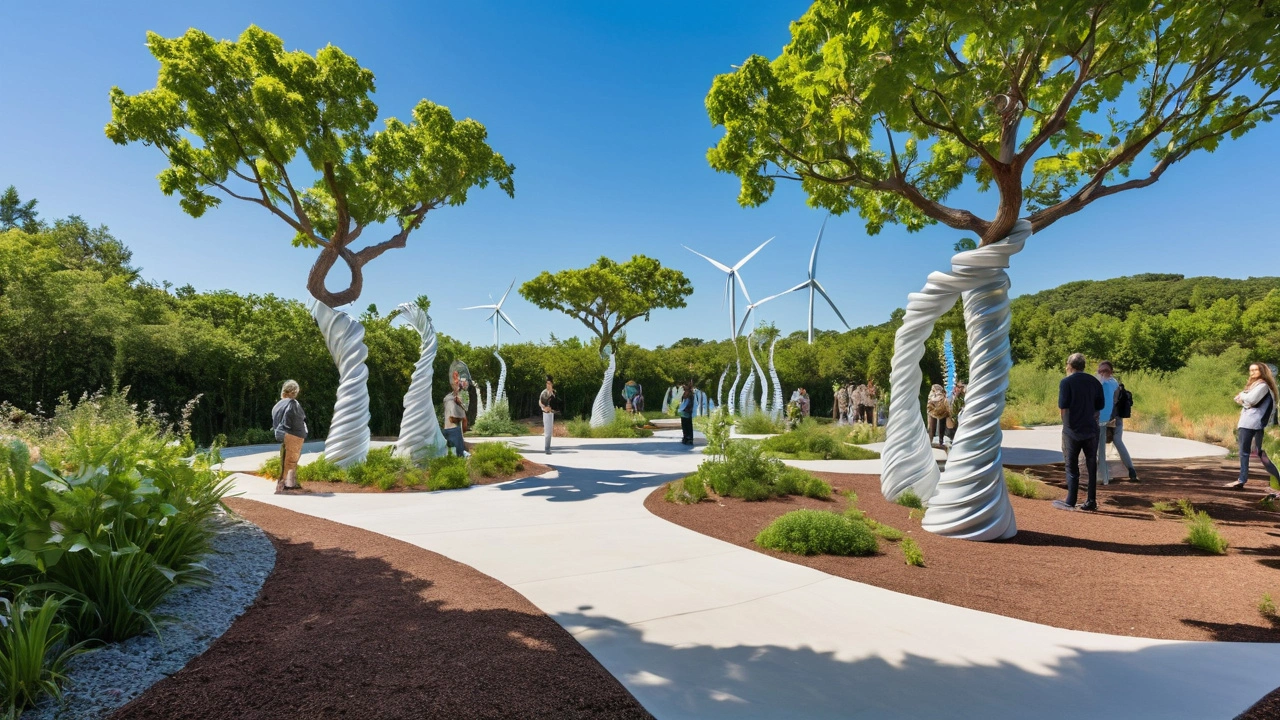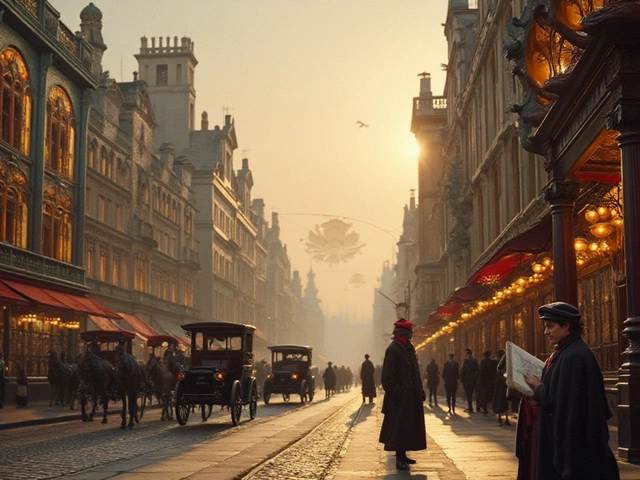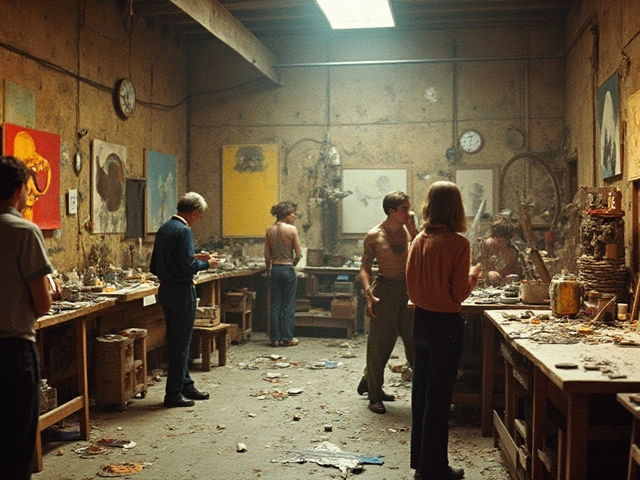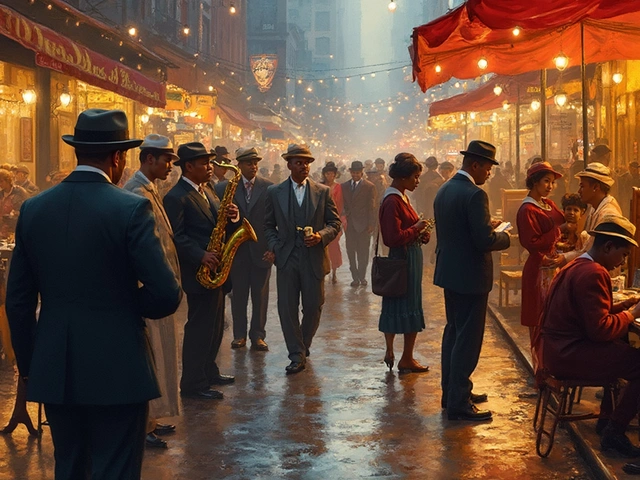Modern installation art frequently delves into environmental themes, capturing the audience’s imagination and sparking conversations about critical issues such as climate change, pollution, and sustainability. This unique form of artistic expression often serves as a mirror, reflecting the pressing challenges our world faces today.
Unlike traditional art forms, installation art provides an immersive experience, inviting viewers to engage with the artistic message on a deeper level. Environmental installations can be thought-provoking, urging individuals to consider their own roles in these global challenges.
From large-scale outdoor projects to intimate indoor displays, environmental installation art encompasses a wide range of mediums and approaches. We'll explore some of the most impactful works, the artists behind them, and how these pieces have shaped public discussions about our planet’s future.
Understanding and appreciating these installations can enrich one's perspective on both art and the environment. Through this exploration, you’ll discover the power of art to inspire change and raise awareness about the world we share.
- Introduction to Environmental Installation Art
- Historical Background and Evolution
- Notable Artists and Works
- Impact on Public Awareness
- Interpreting and Appreciating the Art
Introduction to Environmental Installation Art
Environmental installation art is more than just a visual experience; it is an immersive, sensory journey into the heart of ecological issues. This art form has been gaining traction in recent years as artists increasingly turn their focus towards the urgent problems facing our planet. Through innovative and often interactive installations, these artists seek not only to raise awareness but also to inspire action.
At its core, environmental installation art involves the creation of large-scale works that occupy and transform spaces, often making use of natural or reclaimed materials. Whether it's converting trash into treasure or using light and sound to simulate natural phenomena, these installations are designed to capture the viewer's attention and provoke thoughtful reflection. Many installations are temporary, which underscores the ephemeral nature of the environment they aim to protect.
The roots of this art form can be traced back to the 1960s and 1970s, a period marked by the rise of the environmental movement. Early pioneers, such as Robert Smithson with his famous "Spiral Jetty," created land art that interacted with and drew attention to the natural world. The tradition continues today with artists like Olafur Eliasson and his ice block series, meant to highlight the impacts of climate change on the Arctic ice sheets.
Environmental art installations are not confined to traditional gallery spaces; they often find homes in urban settings, natural landscapes, or even digital realms. The versatility of this art form allows for a broad range of expression and invites a diverse audience to engage with the environmental message. This adaptability mirrors the varied and interconnected nature of the environmental challenges we face, from global warming to deforestation and ocean pollution.
One of the most compelling aspects of these installations is their ability to evoke a deep emotional response. By situating their works in everyday environments or unexpected locations, artists blur the lines between art and reality, forcing viewers to confront the environmental degradation that might otherwise go unnoticed. According to a 2021 survey, over 60% of viewers reported feeling more motivated to take environmental action after experiencing an installation, underscoring the profound impact of this medium.
Renowned installations like Christo and Jeanne-Claude’s "The Gates" in New York's Central Park and Agnes Denes' "Wheatfield - A Confrontation" offer vivid examples of how environmental art can transform perceptions. By placing art in public spaces, these works become part of the urban fabric, accessible to all and encouraging communal reflection on environmental stewardship.
As we move deeper into the 21st century, the importance of environmental art installations continues to grow. They offer a unique lens through which we can view and understand the ecological crises of our time. By bridging the gap between science and society, art and activism, these installations provoke dialogue, foster empathy, and ultimately encourage positive environmental change.
In the following sections, we will explore the evolution of this art form, highlight notable artists and their works, discuss the impact on public awareness, and provide tips on how to interpret and appreciate these powerful installations.
Historical Background and Evolution
The roots of environmental installation art can be traced back to the 1960s and 1970s, a period of significant social and political upheaval. During this time, artists began to challenge traditional notions of art and its purpose. The rise of the environmental movement, sparked by events like the first Earth Day in 1970, provided fertile ground for artists to explore ecological themes in their work. These early installations were often site-specific, meant to exist outside the conventional gallery or museum spaces, directly in the environment they sought to comment on.
One of the pioneers of this movement was Robert Smithson, whose 1970 work "Spiral Jetty" remains one of the most iconic examples of environmental art. Constructed in the Great Salt Lake in Utah, this massive earthwork sculpture engages directly with the natural landscape, highlighting the changing environmental conditions of the lake. Smithson’s work symbolized a departure from studio art, emphasizing a direct relationship between art and nature.
The 1980s and 1990s saw a significant expansion of environmental installation art, with artists like Christo and Jeanne-Claude creating large-scale, temporary works that often required years of planning and significant public interaction. Their projects, including "The Gates" in Central Park and "Wrapped Reichstag" in Berlin, utilized natural and urban environments to create striking visual commentaries on human intervention in the landscape. These works continued to bridge the gap between art and the environmental movement, drawing public attention to ecological issues through their sheer scale and ambition.
In recent years, environmental installation art has become increasingly focused on sustainability and the use of recycled materials. Artists like Olafur Eliasson and Maya Lin have created works that not only highlight environmental concerns but also incorporate elements of activism and education. Eliasson’s "Ice Watch," which brought blocks of melting glacier ice to city centers, and Lin’s "What Is Missing?" project, a multimedia work dedicated to raising awareness about habitat loss, exemplify this trend. These contemporary pieces continue to evolve the dialogue between art and the environment, engaging with current scientific data and ecological discourse.
As environmental concerns have intensified, the role of installation art in addressing these issues has expanded. Today, artists often collaborate with scientists and environmental organizations to create works that are both aesthetically powerful and scientifically informed. This interdisciplinary approach has enriched the field, producing installations that are not only visually compelling but also grounded in factual, environmental realities. Such collaborations highlight the potential of art to not only raise awareness but also inspire tangible action towards sustainability.
"Art can communicate in a way that transcends traditional boundaries of language and culture. It can bring people together and inspire change in a deeply personal and profound manner." - Olafur Eliasson
The evolution of environmental installation art reflects broader changes in societal attitudes towards the environment. From its early roots in the countercultural movements of the 1960s to the sophisticated, interdisciplinary works of today, this genre has continuously adapted to meet the challenges of its time. By tracing this history, we can gain a deeper understanding of how artists have used their creativity to engage with and influence the conversation around environmental issues.
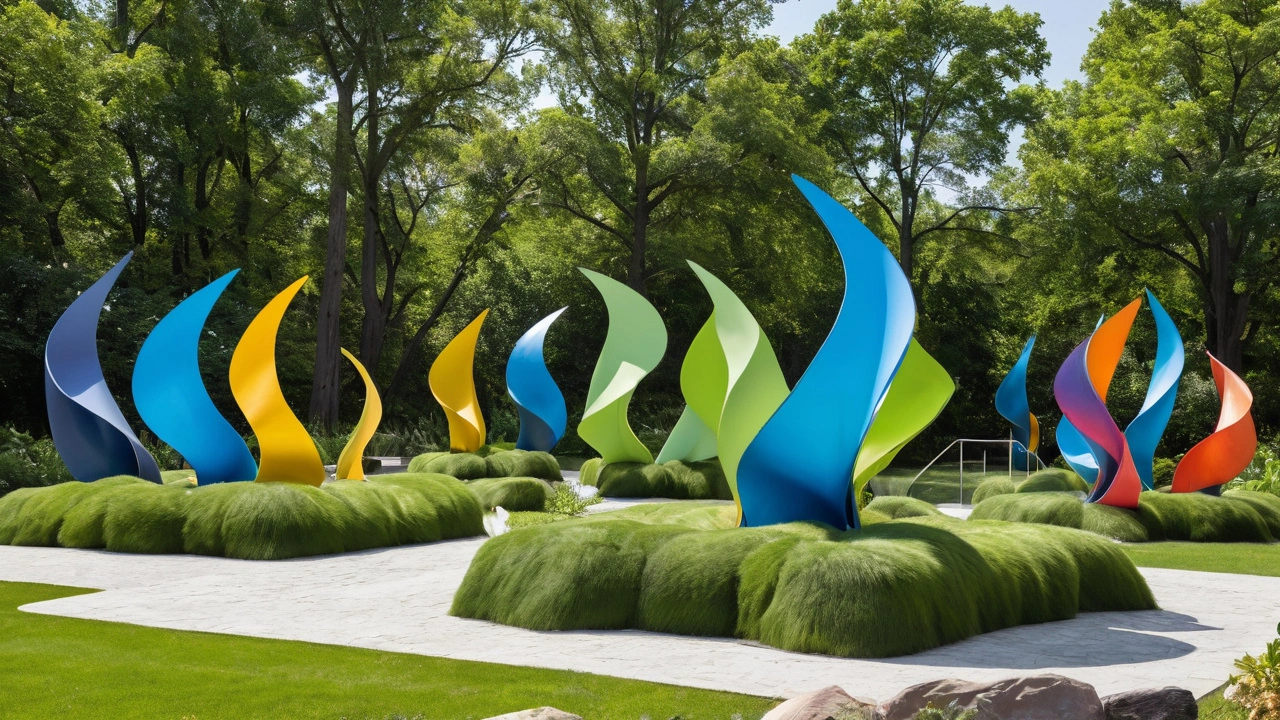
Notable Artists and Works
When we think about modern installation art focusing on environmental issues, certain names and works resonate particularly strongly due to their profound impact and innovation. These artists utilize their creativity to bring urgent ecological concerns to the forefront of public discourse.
One of the most influential figures in this field is Olafur Eliasson. Known for his large-scale installations that intertwine art and nature, Eliasson’s works often highlight environmental degradation and the beauty of our natural world. A prime example is
Impact on Public Awareness
Environmental installation art has a profound impact on public awareness by bringing ecological issues to the forefront of cultural discourse. These artworks often serve as powerful visual statements that go beyond conventional messaging to capture the viewers' emotions and thoughts deeply. One of the primary reasons these installations are so effective is their ability to create immersive experiences that allow people to engage with the subject matter in a personal and memorable way.
For instance, Olafur Eliasson's installation 'Ice Watch', which featured melting ice blocks from Greenland placed in urban environments like London and Paris, forced people to confront the visceral reality of climate change through sight, touch, and the stark contrast of ice in a cityscape. This artwork not only highlighted the urgency of melting ice caps but also made the issue tangible for those who might otherwise only read about it in abstract terms.
“Art can transform the way we think about the world and influence our actions. It's about connecting emotionally and intellectually, leading to real change.” – Olafur Eliasson
Environmental installations can galvanize public opinion and inspire activists. When placed in public places, these works often become focal points for discussion, education, and sometimes even protest. They provide a space where artists, viewers, and activists can intersect, creating opportunities for dialogue and community action.
Another notable example is Agnes Denes' 'Wheatfield - A Confrontation,' where she planted a two-acre wheatfield in New York City's Battery Park landfill. This juxtaposition of urban and natural environments raised questions about land use, urban development, and food production, eliciting strong reactions from the public and media attention back in the 1980s. It’s a clear testament to how art can make criticisms of environmental policies more visible to the public eye.
Long-lasting Educational Value
Aside from momentary influence, these installations often have long-term educational value. Museums and educational institutions sometimes collaborate with artists to create installations with supportive materials that inform audiences about specific environmental issues in detail. The Tate Modern's Turbine Hall has hosted numerous installations addressing climate change, each accompanied by pamphlets, guides, and interactive exhibits that educate visitors about the science and politics behind the artworks.
These efforts make art a valuable educational tool, not only for those with a keen interest in art but also for students, tourists, and the general public. The multifaceted engagement that installation art offers can help create lasting memories that reinforce the importance of environmental sustainability.
Statistics have shown that when individuals engage with art, they are more likely to retain the information and develop a personal connection to the issue. For example, a report by Art Fund revealed that 68% of people felt more aware of climate change's impact after experiencing art installations that focused on environmental themes.
Shaping Policy and Action
Furthermore, the influence of environmental installation art extends to policy-making circles as well. Legislators, urban planners, and environmentalists can be influenced by the public sentiment and discussions sparked by these installations. For instance, after the installation of 'The Floating Piers' by artist Christo and Jeanne-Claude on Italy's Lake Iseo, there was a noticeable increase in local and international conversations around the sustainable use of water bodies.
Environmental installation art can serve as a bridge between science and the public, simplifying complex ecological issues and encouraging informed discussions. By creating a platform where art meets activism, these installations can inspire a collective push towards policy changes and innovative solutions to the environmental crises facing our planet today.
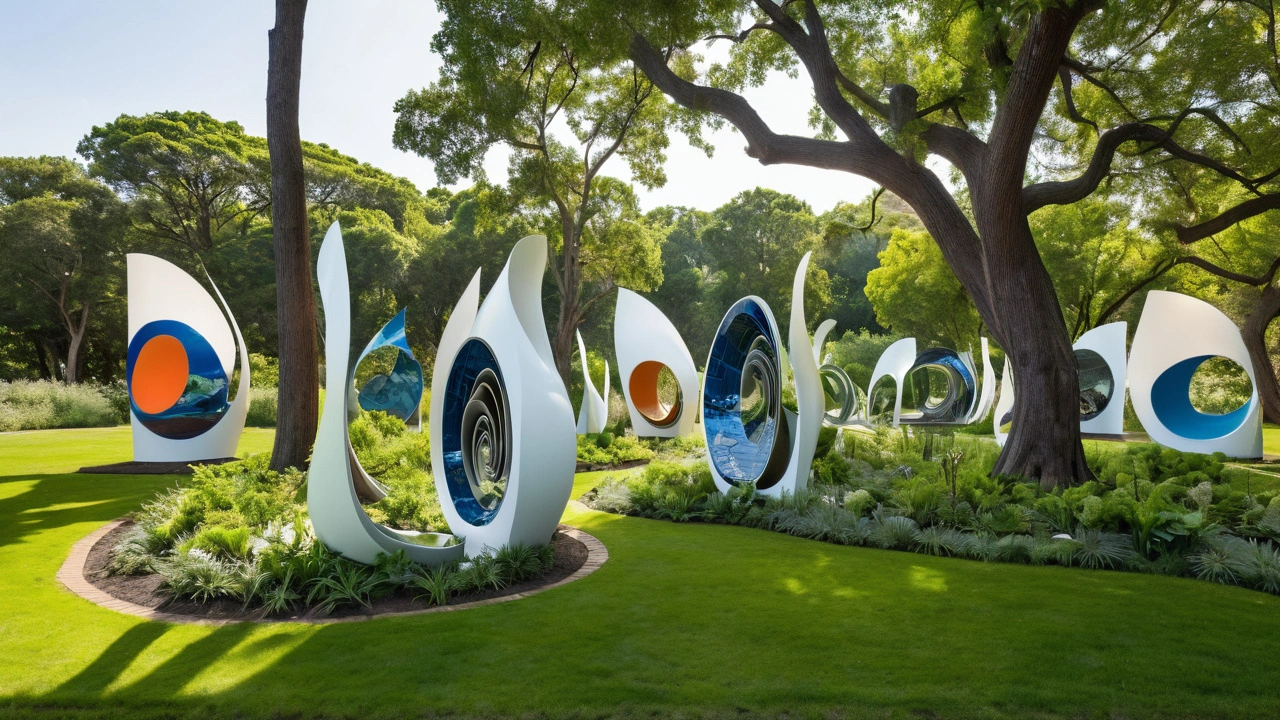
Interpreting and Appreciating the Art
Interpreting modern environmental installation art can be both a deeply personal and richly communal experience. To fully appreciate these works, it's essential to understand the artist’s intention, the context within which the piece was created, and your own emotional reaction to the installation.
The first step in interpreting this art form is to approach it with an open mind. Environmental installations often break away from conventional mediums and structures, presenting viewers with an immersive, sometimes provocative environment. Take your time to observe the details — the choice of materials, the spatial arrangement, and any accompanying sounds or movements. These are all parts of the narrative the artist wants to convey.
Consider the materials used in the artwork. Many environmental artists incorporate recycled or natural materials to highlight issues of waste and sustainability. Understanding the significance of these materials can provide deeper insight into the message. For example, artist Aurora Robson uses plastic debris collected from oceans to create her intricate sculptures, urging viewers to confront the reality of pollution.
Reflecting on the emotions the installation evokes is another crucial aspect. Whether it inspires awe, sadness, or even discomfort, these emotional responses are integral to the experience. Often, artists aim to provoke strong feelings to prompt viewers into thinking critically about environmental issues. According to Olafur Eliasson, “Art has the potential to make the seemingly abstract ideas about climate change feel real and urgent.”
Engaging with the broader context can also enrich your understanding. Research the artist’s background, previous works, and the environmental issues they focus on. Visiting exhibitions or reading interviews can provide valuable perspectives which might not be immediately evident from the installation alone. Exploring related artworks can further expand your appreciation and interpretation.
Group discussions can offer a wider range of interpretations and insights. Sometimes, hearing others' viewpoints can illuminate aspects of the artwork you hadn't considered. Art galleries and museums often host talks and guided tours, which can be great opportunities to deepen your understanding and engage with the community.
Finally, consider the impact of the installation on your own behavior and thoughts about the environment. Artists often aim to inspire change, not only in public discourse but also in individual actions. Reflecting on how the artwork influences your view of environmental issues can be a powerful step toward personal and collective transformation.
“Art is not a mirror held up to reality but a hammer with which to shape it.” - Bertolt Brecht
This journey of interpretation and appreciation is ongoing. Each time you engage with environmental installation art, you bring new experiences and perspectives that can deepen your connection to the art and the issues it addresses. Embrace this evolving relationship, and you may find yourself not just an observer, but an active participant in the dialogue between art and environment.

